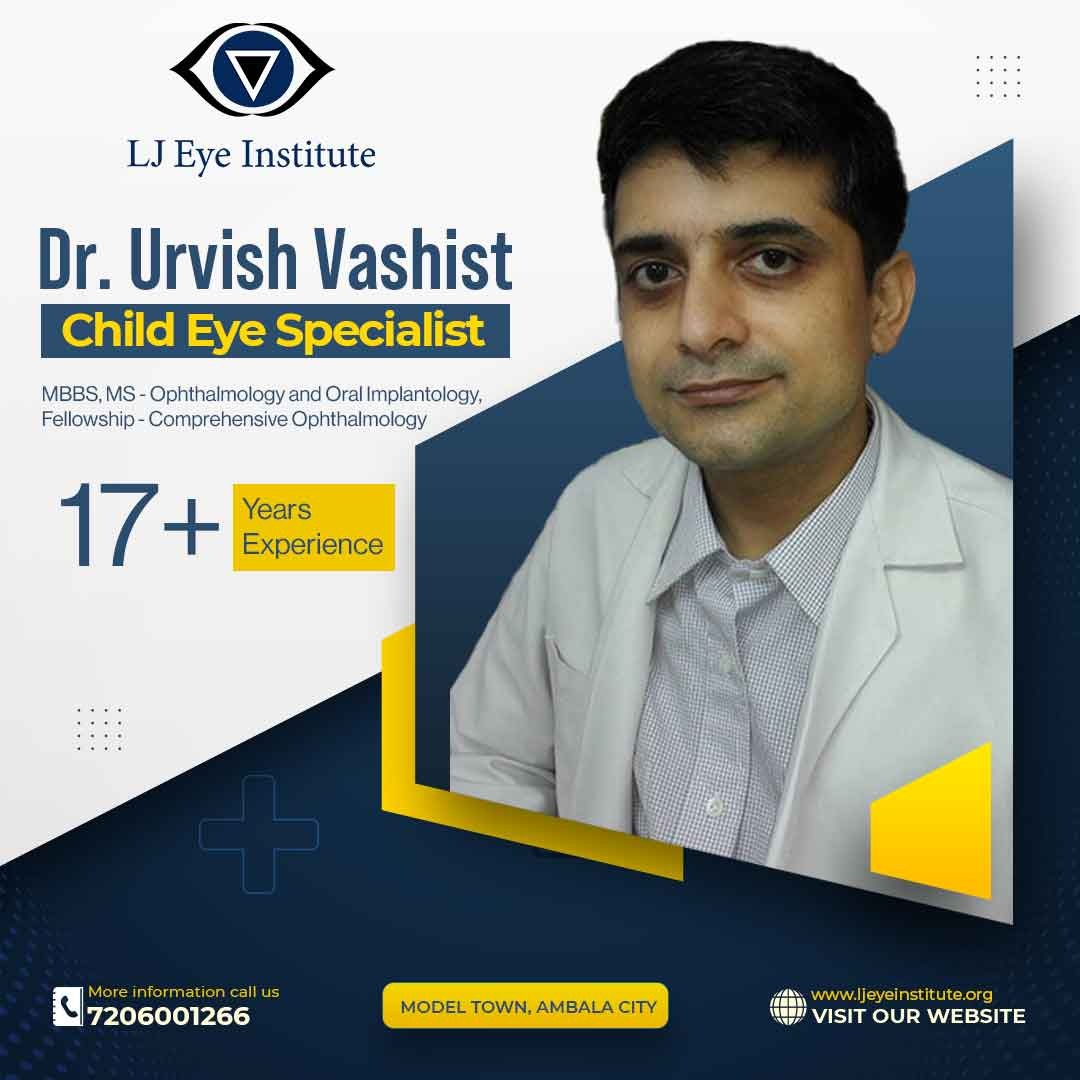Lazy Eye Treatment
Treating lazy eye, also known as amblyopia, typically involves early intervention, especially in children.
Squnit Correction
Lazy Eye
Watery Eyes
Cataract in Kids

Squint Surgery in Ambala City
Amblyopia generally develops from birth up to age 7 years. It is the leading cause of decreased vision among children. Rarely, lazy eye affects both eyes.
Early diagnosis and treatment can help prevent long-term problems with your child’s vision. The eye with poorer vision can usually be corrected with glasses or contact lenses, or patching therapy.
Why To Choose LJ Eye Institute For Lazy Eye Treatment
When it comes to your child’s vision, choosing the right specialist is paramount. At LJ Eye Institute, we understand the importance of expert care and compassion when it comes to pediatric ophthalmology. Here’s why parents in Ambala choose us:Expert Pediatric Ophthalmologist: Dr. Urvish Vashish, our renowned pediatric ophthalmologist, brings years of experience and expertise to our institute. His dedication to children’s eye health ensures that your child receives the best possible care.
How long can a lazy eye last?
Can people with lazy eyes see straight?
What happens if you ignore a lazy eye?
Is a lazy eye a stronger eye?
Does lazy eye affect vision?
Can a correct lazy eye come back?
Do people with lazy eyes see two things?
Does lazy eye worsen with age?
Is there a surgery for lazy eyes?
What happens if lazy eye is not treated?
Can lazy eye look normal?
Can lazy eye come back?
Lazy Eey Symptoms
- An eye that wanders inward or outward
- Eyes that appear to not work together
- Poor depth perception
- Squinting or shutting an eye
- Head tilting
- Abnormal results of vision screening tests
Risk Factors
Factors associated with an increased risk of lazy eye include:
- Premature birth
- Small size at birth
- Family history of lazy eye
- Developmental disabilities

Causes of Lazy Eye
Anything that blurs a child’s vision or causes the eyes to cross or turn out can result in lazy eye. Common causes of the condition include:
- Muscle imbalance (strabismus amblyopia). The most common cause of lazy eye is an imbalance in the muscles that position the eyes. This imbalance can cause the eyes to cross in or turn out, and prevents them from working together.
- Difference in sharpness of vision between the eyes (refractive amblyopia). A significant difference between the prescriptions in each eye — often due to farsightedness but sometimes to nearsightedness or an uneven surface curve of the eye (astigmatism) — can result in lazy eye.
Glasses or contact lenses are typically used to correct these refractive problems. In some children lazy eye is caused by a combination of strabismus and refractive problems.
- Deprivation. A problem with one eye — such as a cloudy area in the lens (cataract) — can prohibit clear vision in that eye. Deprivation amblyopia in infancy requires urgent treatment to prevent permanent vision loss. It’s often the most severe type of amblyopia.
In Numbers
Squint Correction
Lazy Eye Treatment
Myopia Patients
Kids Cataract Surgeries
Amblyopia (lazy eye) causes blurry vision in one eye when something affects how a child’s eyes are developing. As their brain ignores the weaker eye, that eye drifts out of position. Amblyopia is the most common vision issue that affects kids. It’s rare, but amblyopia can affect both eyes at the same time.
What does amblyopia look like?
You might not be able to see anything physically different in your child’s eyes if they have amblyopia. Their affected eye may not line up with the stronger eye — it might look off-center or like it’s drifting in a direction that doesn’t match where they’re looking.
Still Have Questions?
Patients Feedbacks

My 6 year old son was facing allergy in his eyes since a long time. Then we visited LJ eye hospital and consulted Dr Urvish. He is a highly efficient consultant. staff is also good.

Got my son’s squint surgery done from Dr urvish vashisht. Satisfactory treatment. Staff was also polite and helpful.

Dr urvish vashisht is an amazing doctor. Really satisfied with the line of treatment and services.
Empanelments



















